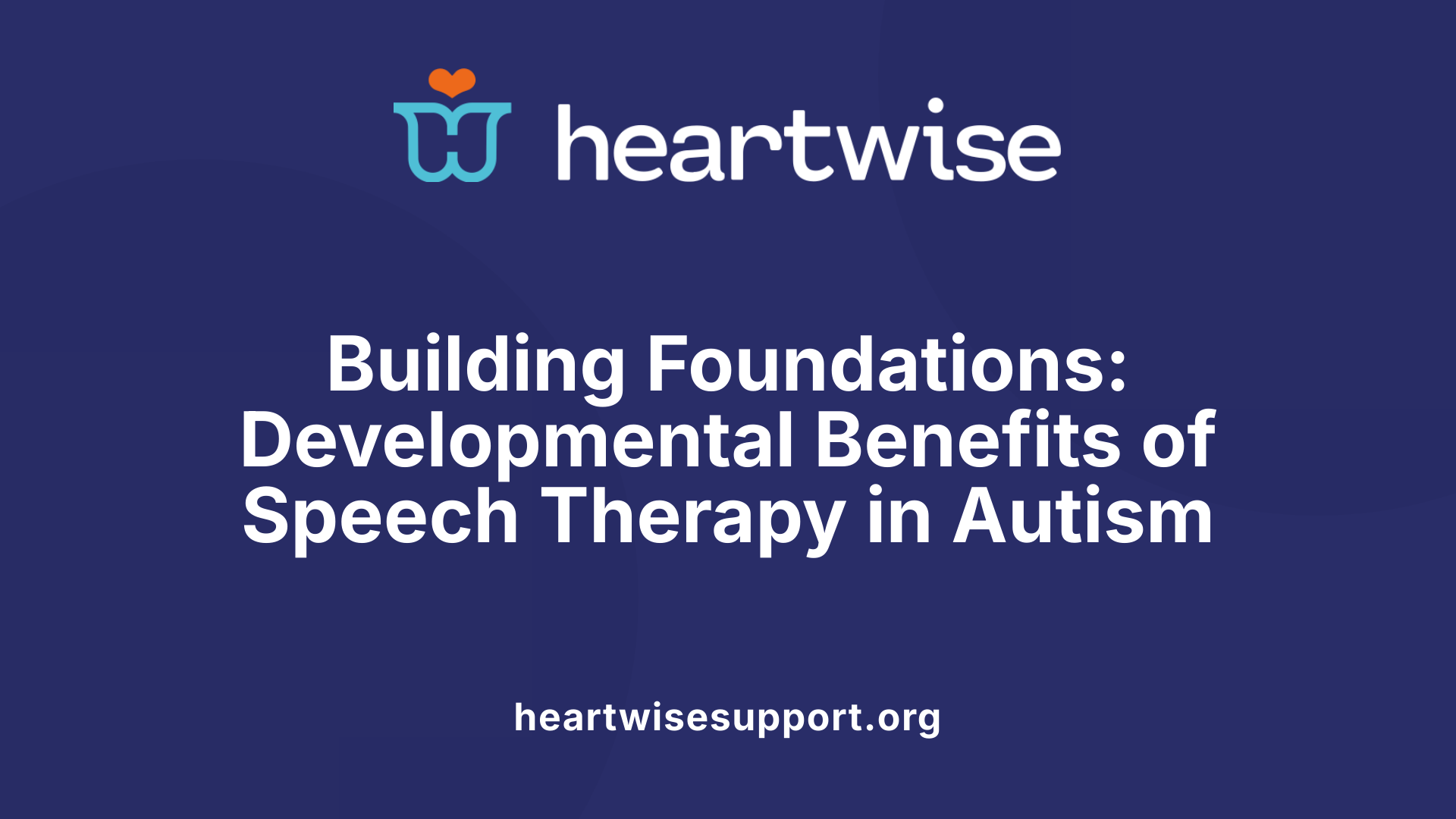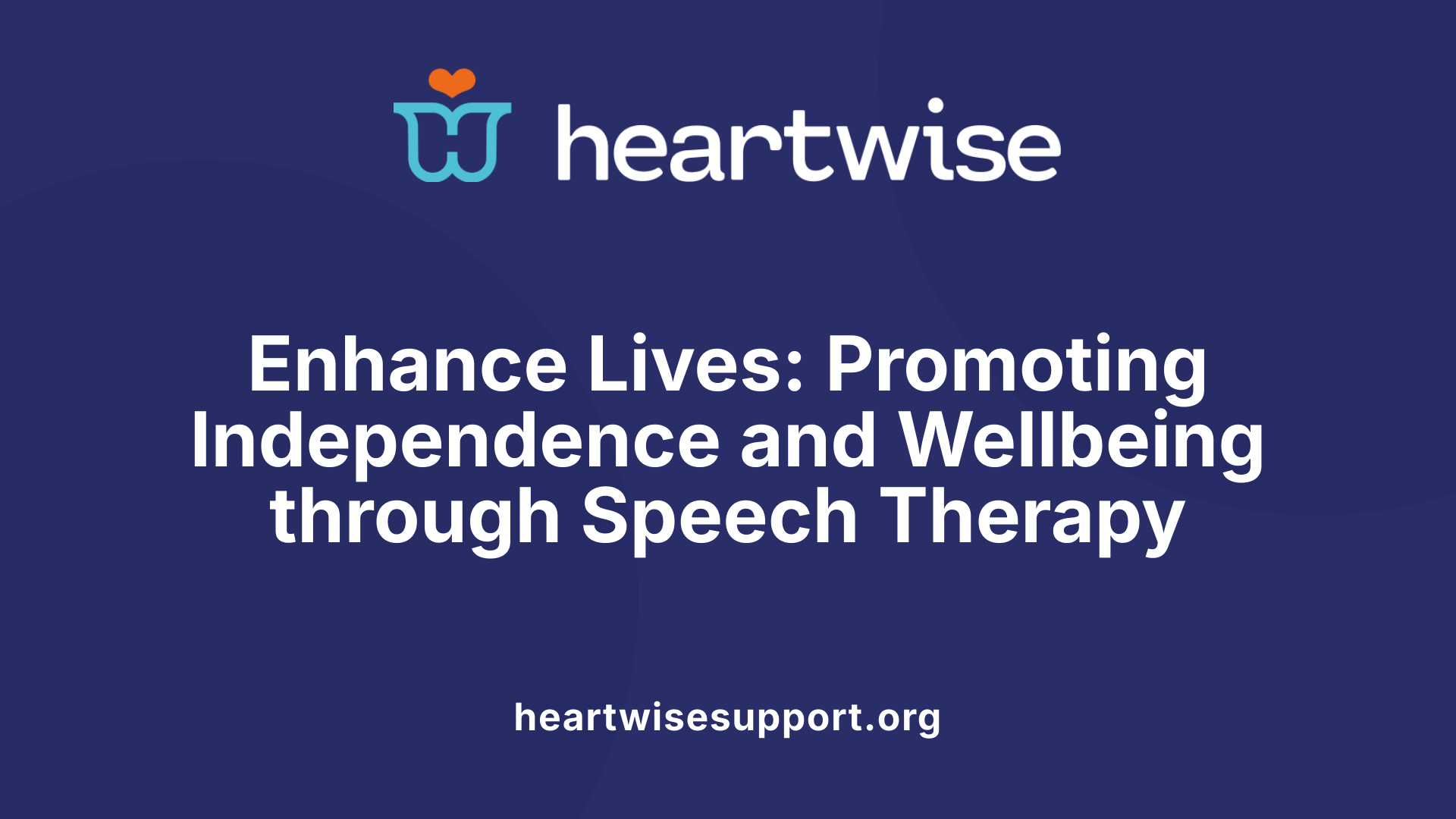Understanding How Speech Therapy Transforms Lives
Speech therapy plays a crucial role in supporting children with autism, especially those who are nonverbal. By focusing on developing both verbal and nonverbal communication skills, speech therapy helps children express their needs, engage socially, and build meaningful relationships. This article explores how various techniques, tools, and strategies impact the development and social integration of nonverbal children with autism, ultimately enhancing their quality of life.
Holistic Assessment and Personalized Goals in Speech Therapy
How does speech and language therapy help children with autism?
Speech and language therapy (SLT) plays a vital role in supporting children with autism by fostering effective communication skills. Through personalized assessments, speech-language pathologists (SLPs) identify each child's unique strengths and challenges, considering factors such as co-occurring conditions like Childhood Apraxia of Speech, sensory sensitivities, and environmental influences.
Therapists employ evidence-based techniques that are tailored to the child's needs, including visual supports, social stories, and play-based activities that encourage both verbal and nonverbal communication. For non-verbal children, SLT often introduces augmentative and alternative communication (AAC) tools such as sign language, picture exchange systems, or speech-generating devices to facilitate understanding and expression.
Beyond speech, therapy focuses on improving social interaction, emotional regulation, and understanding social cues, which are often challenging for children with autism. By addressing these areas holistically, SLT helps children connect more meaningfully with their environment, build relationships, and participate actively in daily life, thereby significantly enhancing their overall quality of life and community involvement.
What are the main goals of speech therapy for nonverbal children with autism?
The primary aim of speech therapy for nonverbal children with autism is to develop practical and functional communication skills. This involves enabling children to express their wants, needs, and thoughts in ways that are appropriate for their developmental level and individual interests.
Key goals include increasing joint attention and social reciprocity, improving language comprehension, and promoting the use of gestures, signs, or speech if possible. Therapists work to help children understand social cues, recognize emotions, and participate in social routines, which can significantly enhance social engagement and independence.
Goals are carefully individualized, incorporating neurodiversity-affirming practices that respect each child's unique ways of learning and communicating. The overall objective is to reduce communication barriers, enhance social participation, and support emotional well-being. By doing so, speech therapy aims to empower children with autism to express themselves confidently, connect with others, and improve their quality of life across all settings.
Utilizing Techniques and Tools for Effective Communication Development

What strategies and tools are effective in speech therapy for nonverbal autistic children?
Effective speech therapy for nonverbal autistic children relies on personalized approaches that suit each child's unique needs. Central strategies include encouraging play, social engagement, and imitation to foster interaction.
Therapists focus on non-verbal communication cues such as gestures, eye contact, facial expressions, and body language to build foundational skills. Using augmentative and alternative communication (AAC) devices is common. These tools include picture exchange systems (PECS), speech-generating devices, and tablet applications like Proloquo2Go, which give children a way to express themselves.
Visual supports play an essential role. These can be picture cards, social stories, or visual cue systems that help children associate symbols with words and actions. Simplifying language, using short phrases, and embedding activities within their interests make learning engaging and accessible.
The involvement of parents and caregivers is vital. They are guided to practice communication strategies at home, creating consistency and reinforcing new skills. Early intervention programs and regular progress assessments help in adapting techniques and tracking improvements.
In sum, combining personalized strategies, visual supports, technology, play-based activities, and family involvement creates a comprehensive approach that enhances communication development.
What methods and techniques are used in speech therapy for nonverbal autistic children?
Speech therapy employs various methods to help nonverbal children with autism learn to communicate effectively. Techniques often include modeling and encouraging gestures, such as pointing or waving, which form the basis for later verbal skills.
Therapists introduce and promote the use of visual supports like picture cards, storyboards, and visual cue systems to help children understand and express language. AAC tools, including sign language, PECS, and speech-generating devices, are integrated into therapy sessions to offer alternative channels for communication.
Activities are structured around developing receptive language, such as following simple directions, and expressive skills like requesting, commenting, and answering questions. Play-based interventions using role-playing and sensory activities help improve social interaction and turn-taking.
Parents are actively involved, receiving training on how to implement techniques at home. This consistency supports generalization of skills across settings. Progress is continuously monitored to adjust strategies as needed, ensuring steady advancement toward communication milestones.
By combining these methods—visual supports, AAC devices, structured play, and caregiver participation—speech therapy provides a supportive environment for nonverbal autistic children to develop meaningful communication skills.
Techniques and Activities That Foster Language and Social Skills
 In speech therapy for children with non-verbal autism, engaging in specific interactive activities can significantly support language and social development. Therapists often incorporate reading short stories that capture the child's interest, using both visual and auditory cues to evoke responses and understandings. Role-play activities are also common, allowing children to practice social situations in a safe, controlled environment, helping them recognize social cues and respond appropriately. Sensory play, involving tactile and visual stimuli, can improve focus and help children connect words with their experiences.
In speech therapy for children with non-verbal autism, engaging in specific interactive activities can significantly support language and social development. Therapists often incorporate reading short stories that capture the child's interest, using both visual and auditory cues to evoke responses and understandings. Role-play activities are also common, allowing children to practice social situations in a safe, controlled environment, helping them recognize social cues and respond appropriately. Sensory play, involving tactile and visual stimuli, can improve focus and help children connect words with their experiences.
These activities are designed to encourage spontaneous communication and social interaction. For instance, children may be prompted to imitate animal sounds or signals, facilitating vocalization and gestures. Visual supports such as image cards, communication boards, and picture symbols are integrated into play, providing clear references for the child to link words with objects or actions.
Augmentative and Alternative Communication (AAC) devices, like speech-generating tablets or sign language, are often used alongside these activities to give children tools for expression. Positive reinforcement and modeling of behaviors—such as encouraging pointing, waving, or signing—are essential to foster a connection between visual or gestural communication and spoken language.
Overall, the combination of play-based and visual activities, supported by technological aids, creates an engaging environment where nonverbal children can practice and expand their communication skills. Family involvement, including guiding parents to incorporate these activities at home, enhances consistency and encourages progress toward effective communication and social understanding.
Developmental Benefits and Social Connection through Speech Therapy
What is the developmental impact of speech therapy on children with autism?
Speech therapy plays an important role in supporting children with autism by fostering their communication skills, which are vital for their overall development. The improvements are often small to moderate but meaningful, especially in expressive language abilities essential for effective interaction. Early intervention can help children build foundational skills like understanding language, using gestures, and producing sounds, which contribute to increased social participation.
This therapy not only enhances language but also promotes emotional regulation by helping children express their feelings clearly and understand others’ emotions. As a result, children often experience a reduction in frustration and problematic behaviors such as meltdowns. Speech therapy also encourages social engagement through activities that develop turn-taking, eye contact, and mimicking social cues.
Children with higher initial language skills tend to benefit more from therapy, but all can gain from early, consistent intervention. When delivered by trained clinicians, especially with active involvement from caregivers, speech therapy can significantly boost independence, improve peer relationships, and support academic success, ultimately enriching their quality of life.
How can speech therapy support social connection for children with autism?
For children with autism, speech therapy offers tools to strengthen social bonds through improved communication. It emphasizes learning how to understand and use verbal and non-verbal signals, including facial expressions, gestures, and body language, which are fundamental in social interactions.
Therapists teach social skills such as taking turns in conversations, making eye contact, initiating greetings, and responding appropriately to others’ feelings. These skills are developed through engaging activities like role-playing, social stories, and visual supports, which make learning fun and relatable.
Furthermore, speech therapy helps children recognize and express emotions, fostering empathy and deeper connections. Working closely with caregivers, teachers, and peers ensures that these skills are practiced across different settings, promoting consistency and confidence.
By strengthening both speaking and understanding abilities, speech therapy lays the foundation for children to participate more meaningfully with peers, leading to improved relationships, increased social confidence, and a greater sense of belonging.
| Impact Area | Specific Benefits | Support Strategies |
|---|---|---|
| Communication Skills | Improved expressive and receptive language skills | Verbal modeling, AAC tools, visual supports |
| Social Skills | Better turn-taking, eye contact, understanding cues | Role play, social stories, peer interaction exercises |
| Emotional Regulation | Ability to express feelings and understand others' emotions | Emotion recognition activities, facial expression training |
| Independence | Greater ability to communicate needs and wants | Functional requests, sign language, picture exchange |
| Overall Development | Increased confidence and motivation to engage socially | Play-based therapy, collaborative activities |
Developmental Benefits of Speech Therapy in Autism Spectrum Disorder

What is the developmental impact of speech therapy on children with autism?
Speech therapy plays a vital role in the growth and development of children with autism. While its effects are often modest, it significantly supports improvements in both expressive language—the ability to share thoughts and feelings—and overall communication skills.
Early intervention is especially effective, helping children build foundational communication abilities such as listening, turn-taking, and understanding social cues. This process reduces feelings of frustration and promotes emotional regulation.
Children who start speech therapy with some existing language skills tend to see greater benefits, but even nonverbal children can develop alternative methods to communicate, like gestures, sign language, or using assistive devices.
The intervention also promotes social engagement, encouraging children to initiate conversations, interact with peers, and respond appropriately in social settings. These skills are crucial for building relationships and participating actively in academic and community environments.
Moreover, speech therapy boosts children's confidence and self-esteem as they gain new ways to express their needs and emotions. This increased confidence often leads to better emotional regulation and less problematic behavior.
Research indicates that the positive effects of speech therapy, especially when provided early and involving caregivers, have lifelong benefits. They include greater independence, better social skills, and improved quality of life.
Overall, speech therapy supports a child's comprehensive development, addressing not just language but also emotional and social growth—integral components for success and happiness in daily life.
Enhancing Quality of Life and Promoting Independence Through Speech Therapy
 Speech therapy plays a crucial role in improving the lives of children with autism by fostering their ability to communicate effectively. One of the most notable benefits is the reduction of frustration, which often results from unmet communication needs. When children learn new ways to express themselves, they experience fewer meltdowns and behavioral challenges.
Speech therapy plays a crucial role in improving the lives of children with autism by fostering their ability to communicate effectively. One of the most notable benefits is the reduction of frustration, which often results from unmet communication needs. When children learn new ways to express themselves, they experience fewer meltdowns and behavioral challenges.
Another significant outcome is increased confidence. As children develop their verbal and nonverbal skills—such as gestures, sign language, or using AAC devices—they become more willing to participate actively in social interactions, school activities, and family routines.
Social engagement and community participation are also greatly enhanced through speech therapy. By learning to understand and interpret social cues, follow conversations, and express their feelings or opinions, children can form friendships and build stronger peer relationships.
Incorporating tools like speech-generating devices, picture exchange systems, and visual supports allows nonverbal children to communicate their needs and preferences effectively. This increased ability to connect promotes independence in daily activities, whether requesting their favorite snack, commenting on activities, or answering questions.
Furthermore, improving communication skills supports emotional regulation, helping children manage their feelings better. This fosters a sense of achievement and self-esteem.
Early and tailored intervention maximizes these positive outcomes. When therapy goals are personalized, children are more likely to make steady progress, which further enhances their quality of life.
Overall, speech therapy not only addresses immediate communication challenges but also empowers children with autism to lead more autonomous, connected, and fulfilling lives, opening pathways for continued growth and community involvement.
Supporting Lifelong Communication and Social Skills
Speech therapy is a vital and versatile intervention that significantly enhances the lives of children with autism, particularly those who are nonverbal. Through tailored strategies, visual supports, AAC systems, and active family involvement, speech therapists empower children to overcome communication barriers. The developmental, social, and emotional benefits gained through consistent therapy can foster independence and enable children to participate meaningfully in society. Early and ongoing speech therapy not only lays the foundation for better language skills but also promotes social connections and emotional well-being, ultimately supporting children in leading more integrated, confident, and fulfilling lives.
References
- Speech Therapy for Non-Verbal Autism - SpeechEase
- Teaching nonverbal autistic children to talk - Autism Speaks
- 7 Ways Speech Therapy Can Improve Communication Skills in Non ...
- Speech-Language Therapy for Autism | NICHD
- The Benefits of Speech Therapy for Children with Autism
- Speech Therapy - Autism Speaks
- Speech Therapy for Nonverbal Autism
- Nonverbal Autism: Can Speech Therapy Help? - Stamurai











